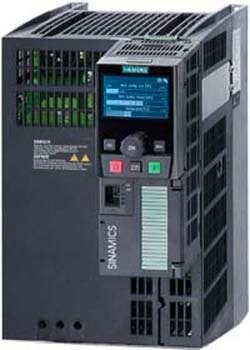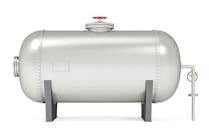Modular Frequency Inverter Is Designed For Energy-Efficient Operations
Oct. 25, 2010
Related To:
Siemens Industry Automation & Drive Technologies' new modular frequency inverter Sinamics G120P is designed for pump, fan, and compressor applications. It is a compact drive that's designed to provide energy-efficient operation of flow machines in building automation, the process and water management industries. It can also be used for the closed-loop speed control of fans and circulating pumps for heating and cooling systems, for booster pumps, or for pumps for level control. It features IP55 degree of protection, so it can be used in harsh conditions. The inverter is available in 0.37 kW to 90 kW power range. The power range is covered in six frame sizes. Sinamics G120P comprises a control unit, a power module, and can be optionally equipped with the Intelligent Operator Panel. To enable the economical operation of applications and equipment, the inverter possesses special functions for improving energy efficiency. It is characterized by a low reactive power value, and the integrated hibernation function enables energy-saving standby mode as a function of the setpoints. By automatically switching to line-fed operation at rated speed, a saving of up to 3% of the energy consumption can be achieved. The auto-ramping function enables currents to be limited and power peaks to be avoided. The inverter only has low effects on the power supply system and fulfils the requirements of the IEC/EN 61000-3-12 standard. No additional components such as line reactors are needed. The Starter and Sizer tools familiar from the Sinamics range of drives are also available for this inverter. The software additionally comprises a large number of application-specific technology functions and modules, such as a digital real-time clock, flying restart and PID controller. The I/O and fieldbus interfaces such as Modbus RTU, CANopen, USS and Profibus have been adapted to the special requirements. A USB interface has been integrated in the inverter for commissioning and diagnostics purposes.





